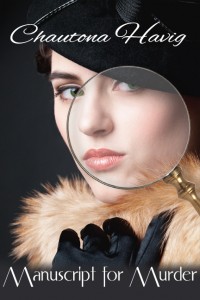My sister really wanted me to read Robert Louis Steveson’s book, Kidnapped, so late last summer, I got it from the library. (Actually, I wrote this review months ago and just never got around to posting it!)
The Author:
Robert Louis Stevenson was born in Scotland in 1850. First studying law, by 1880 Mr. Stevenson had forsaken law school and was entrenched in his writing career. Beginning with essays and pieces of non-fiction published in magazines, he didn’t publish his first novel until 1883. In 1880 Robert Louis Stevenson married an American named Fanny Osborne. He wrote a small handful of novels in his lifetime, including Dr. Jekyll and Mr. Hyde and the well-known Treasure Island. He died in 1894, at the very young age of 44.
Technical Details:
Kidnapped was originally published in 1886. The book I read was published by Harvill. They published the book in 1994. 314 pages long, Kidnapped is divided into 30 chapters. (Note: I didn’t read this on my Kindle, I just forgot to take a picture before the book went back to the library!)
The Story:
Both of David Balfour’s parents have recently died and his father left instructions for his son, telling him to make his way to the House of Shaws. So, Davie sets out, only to arrive at the house and find the owner dead-set against him – and for reasons that he doesn’t understand.
When David starts to unravel the mystery of Shaws and further, decides to stand up to the man of the house, the unexpected happens; he gets shanghaied. And that’s only the beginning. The following months bring sickness, exile, and fear for his life. He runs, he goes hungry, he endures the cold – he suffers as a slave, fights in battles, witnesses murder, nearly sinks to his death… David begins to wonder if he’ll ever return from the land of misery again.
The Writing Style:
I really enjoy Mr. Stevenson’s writing style. He certainly has a brilliant way with words!
I did find his character descriptions lacking feature-wise every now and then, but not enough to really hurt the story.
AS for being in first person; Mr. Stevenson carried it off very well. So well, in fact that I often forgot to even think about the form. David’s personality was portrayed in the narration to be sure, but the book was still beautifully written.
The Characters:
David Balfour was a well rounded character. Heroic, yet capable of wrong doing, he came off very realistic.
Then, there was Alan of Breck, whose actual character I will address more later. As a major secondary character, he didn’t have as much depth as David, but he was colorful and well developed.
Of all the characters, besides David, it’s one of the more minor antagonists that stand out to me the most. Mr. Stevenson described his personality and actions so well, that I can picture the man with great clarity.
Unlike Dr. Jekyll and Mr. Hyde, Kidnapped had a plethora of characters, some only introduced for very small sections, never to be heard from again. This added an almost whimsical touch, especially since these characters were written as brilliantly and colorfully as the main characters.
A Few More Thoughts:
Alan of Breck. He bothered me. The man was so very set on revenge! Granted, the governor who he wanted dead did commit some cruel acts. Still; “Never take your own revenge, beloved, but leave room for the wrath of God, for it is written, ‘Vengeance is Mine, I will repay,’ says the LORD.” (Romans 12:19)
And again: “To sum up, all of you be harmonious, sympathetic, brotherly, kindhearted, and humble in spirit; not returning evil for evil or insult for insult, but giving a blessing instead; for you were called for the very purpose that you might inherit a blessing.” (1 Peter 3:8-9)
David did tell Alan that his actions were unchristian, but as much as I liked that David stood up for righteous behavior, I wish that he had used Scripture and really confronted his friend.
Cautions:
Minor language is about all I can think of…
Conclusion:
I really enjoyed Kidnapped. The writing, the scenery (did I mention the setting is Scotland?!), the characters… Definitely a book I would recommend!
To the KING be all the glory!


